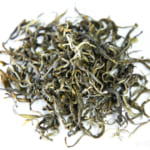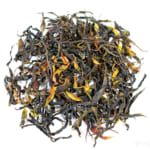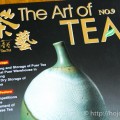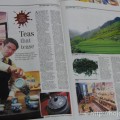- HOME >
- Teapot and Tea Equipment
Teapot and Tea Equipment
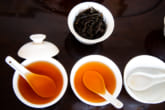
Tea can range from having no noticeable astringency to possessing a very strong one. What causes this astringency? This article explores the causes and mechanisms behind astringency in tea. Causes of Astringency Astringency arises from the binding of tea components to proteins in the oral cavity, creating a sensation of tightness or dryness. The tongue …

- [2025.01.21]
- The Impact of Heat Sources on Tea Flavor
It is widely recognized that the material of a kettle plays an important role in shaping the taste of water for brewing tea. Yet, an often overlooked but equally significant factor is the type of heat source used to boil the water. Different heat sources, whether gas, electric, charcoal, or wood fire, can impart distinct …

We are delighted to announce that HOJO tea shop at The Gardens Mall will be reopening after renovation on Tuesday, July 11th, 10am to 10pm. To celebrate the store’s reopening, we have prepared some special promotions for the entire month of July: 1. For every RM1000 purchase on single receipt, you will have the opportunity …
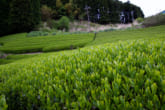
- [2019.12.27]
- The Real Cause of Astringency in Tea
Many people might think that astringency in tea comes from tannin. The fact is tannin only contributed partially to the astringency. There are two types of root cause of astringency. Besides tannin, the astringency comes from minerals too. Difference between tannin and poly phenol Summer or autumn tea is normally astringent. If you drink those …
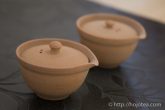
- [2017.12.28]
- A Shiboridashi, the perfect alternative of a Gaiwan
Shiboridashi is one of the tea brewing equipments. In Japan, this equipment is often introduced for brewing Gyokuro or Sencha. However, if we understand its characteristics well, we will notice that it is rather more suitable for brewing pu-erh tea or fermented tea. It is not a must to use Shiboridashi for Gyokuro Generally, a …
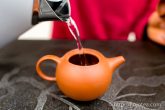
- [2017.11.22]
- Do you know that the taste of water varies everyday?
You might have noticed that the taste of tea is not the same every day. The taste and the flavor somehow differ on a daily basis. It is water that plays the major role. The taste of water changes everyday If we drink tea every day, we could notice that the taste and the flavor …
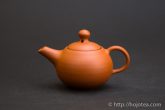
Red clay from A largest Gold Mine in Japan Sado Island is located in the middle of Japan ocean. It is in the north of Niigata city. As this island was formed by submarine volcano, the island has very rich amount of natural minerals. In particular, the gold and silver from Aikawa gold mine was …
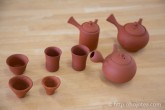
- [2015.07.16]
- Progress of Developing Iga Natural Red Clay
We have been developing Iga Natural Red Clay teapot in a past few years. We were originally planning to introduce it in July, however, we are facing a technical issue. The surface of teapot becomes moist We have managed to finalize the clay and the refining method according to the ideal taste. After we made …
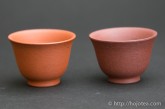
- [2015.04.19]
- Iga Natural Red Clay from the Hometown of Ninja
I discovered very interesting clay in Iga, a place known as the hometown of Ninja in Japan. We are preparing to produce teapots using this special clay. Taste of tea differs a lot depending on the clay The clay used for making teapot influences the taste and flavour of tea. It sometimes enhances the depth …

- [2014.10.12]
- Mumyoi Joaka clay teapot made by Watanabe Tozo
The red clay teapot traditionally produced in Sado Island is called Mumyoi Yaki. By tradition, the Mumyoi clay was collected from the tunnel inside the Aikawa gold mine. However, since the gold mine was shut down, the entryway to the mine cave was restricted and the artist in Sado was finding the clay from the …
PAGE 1 OF 4
- Yunnan Chun Jian Green Tea from High Mountain Gardens
- Yunnan Chun Jian Green Tea is now available.This tea is made from naturally grown leaves harvested from high mountain gardens at 2100m above sea level. It has a rich, long-lasting lingering aftertaste, comparable to raw Pu-erh tea. Yunnan as a Distinctive Tea Growing Region Over the past 20 years, we have explored a wide range …
- Limited Loose Leaf Release of 2025 Da Xue Shan Wild Raw Pu-erh Tea
- We have released the 2025 loose-leaf version of Da Xue Shan Wild Raw Pu-erh Tea.This tea comes from wild tea trees that grow naturally in the high mountains of Yunnan Province, at elevations above 2000 meters. This year, we were only able to secure a small quantity for retail, and the current release is available …
Popular ArticleTeapot and Tea Equipment
 Akitsu Mumyoi Clay from the Great Sado Mountain Range
Akitsu Mumyoi Clay from the Great Sado Mountain Range- Red clay from A largest Gold Mine in Japan Sado Isla...
 Do we have to use one tea pot for one tea?
Do we have to use one tea pot for one tea?- It often comes to the discussion whether or not we...
 Why is Zhuni/Shudei so famous?
Why is Zhuni/Shudei so famous?- Zhuni and red clay is of different meanings...
 The taste of water differs depending on how tetsubin is made
The taste of water differs depending on how tetsubin is made- Many people are aware that a tetsubin effects the tas...
 2 types of clay used for Mumoyi Yaki in Sado Island
2 types of clay used for Mumoyi Yaki in Sado Island- In Japan, the pottery in Sado Island that uses natu...
 Not every clay teapot could get along with Tetsubin/Cast Iron Kettle
Not every clay teapot could get along with Tetsubin/Cast Iron Kettle- Tetsubin produced from different brands are casted fr...
 Grand Reopening of Gardens’ HOJO Store: Exciting Promotions Await!
Grand Reopening of Gardens’ HOJO Store: Exciting Promotions Await!- We are delighted to announce that HOJO tea shop at...
 A Shiboridashi, the perfect alternative of a Gaiwan
A Shiboridashi, the perfect alternative of a Gaiwan- Shiboridashi is one of the tea brewing equipments...
 Selecting Suitable Clay for Japanese Green Tea
Selecting Suitable Clay for Japanese Green Tea- I would like to explain the points on how to choose...
 The effects of porcelain and bone china on the taste of tea
The effects of porcelain and bone china on the taste of tea- Have you ever wonder whether porcelain and Bone Chi...
Shop Info

Address:Lot No. T-215, 3rd Floor, The Gardens Mall, Mid Valley City, Lingkaran Syed Putra, 59200 Kuala Lumpur
Tel: +603-2287-4537
Business Hour: 10am to 10pm
Category
- New Arrival at HOJO Online Shop
- Featured Articles
- Newsletter
- Types of Tea
- Origin of Tea
- Teapot and Tea Equipment
- Tea Column
- How to enjoy tea
- Tea Processing
- How to choose quality tea
- Tea constituents and functional effect
- Safety of Tea
- Foods
- Tea Business Operation
- Hobby and Outdoor Activity
- Ranking of Tea
- Video
- FAQ
- Media Release
Profile

- AKIRA HOJO
- I invite you to experience my tea selections.I was born in Nagano, Japan. In university, I studied agricultural chemistry, and I have the master degree in food science. I worked in Japanese food industry for 10 years. I involved in R&D, QC and QA. As a factory manager, I implemented ISO9000 series and managed the factory.
- The Art of Tea Magazine
- We posted the article on “The Art of Tea Magazine No.9, the magazine is published in Taiwan. We featured some scientific view about the tetsubin
- New Straits Times
- The Malaysian National Newspaper, New Straits Times featured HOJO Tea on 17-Oct-2007.



